3 Simple Steps for Teaching Music Reading in the Elementary Grades
Teaching music reading in the elementary grades is not easy. These 3 steps simplify the process with an easy-to-implement approach.
Some of the links on our site are affiliate links. If you click on a link and make a purchase, we may earn a small commission.
Like many new music teachers, I worked in isolation. My first teaching position was in a rural district with three buildings in three different towns. The other music teacher and I were NEVER in the same building or even the same town at the same time. I never ever saw her!
My isolation was compounded as I encountered new challenges. And, to make matters worse, our district had NO written music curriculum at the time. As a new music teacher, I had little guidance.
Today there are positive online communities that support elementary music teachers with ideas, tips, techniques, and resources for teaching music reading and other music skills.
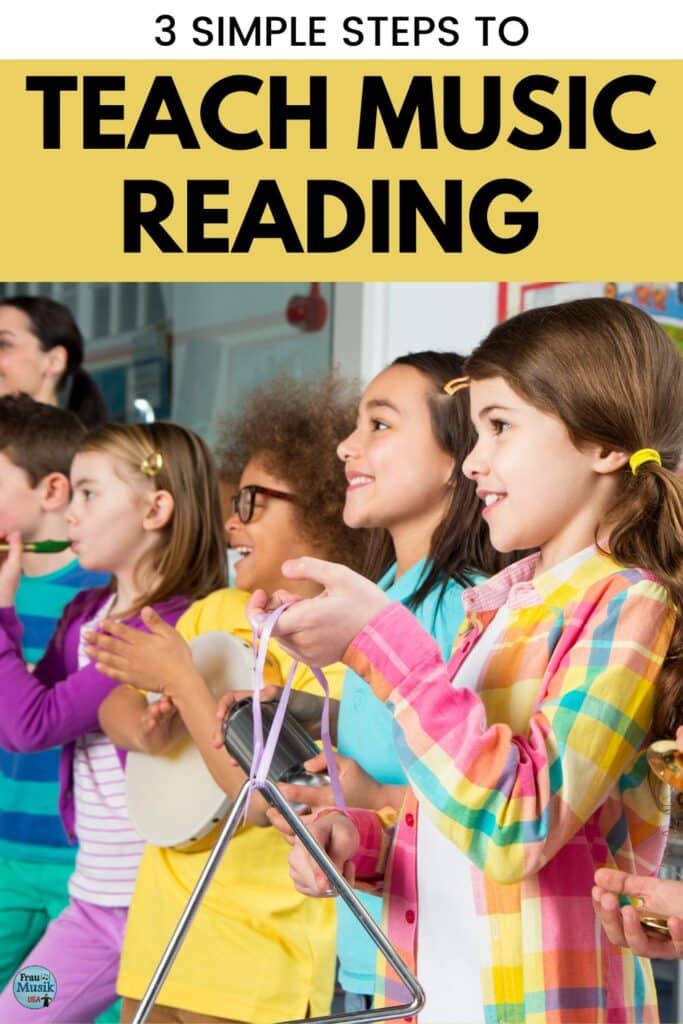
What’s in this post? Click to open the Table of Contents
Support for Elementary Music Teachers
Today, no one teaches in isolation. You probably are still the only music teacher in your building but the world is at your fingertips and may be accessed from your computer keyboard. Supportive music communities where you can glean free ideas, tips, techniques, and resources are here to help.
Demystify the Process of Reading Music
Reading music is often a mystery to young (and not so young) students. Our job as teachers is to give students a systematic way to make sense of musical notation. My students have often asked me this.
“How do you know what a song sounds like if you haven’t heard it before?”
My answer is this.
“In our library we have many books. How do you know what those books are about? You read them, of course.”
But, young children don’t know the process of reading music unless a teacher has taught them a specific method. This spurred me to create our Steps for Reading Music poster for our classroom.
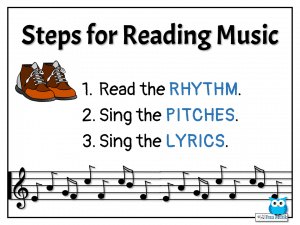
Some variation of this poster has been on the wall in my classroom for many years. My students know the process and rarely need the prompt, but if they do, it’s there.
Step 1 – Read the Rhythm
The rhythm reading system you use doesn’t matter as long as you’re consistent. Kodaly, Gordon, French Time, Takadimi, all serve the same purpose. But, PLEASE, PLEASE, PLEASE, do NOT say “Sh” for rests. Rests do not make any sound.
Also, I do not recommend you use the Number System of counting with young children. Usually, young students are not ready to use the number system of counting. For more about rhythm syllables, check out this excellent post on Make Moments Matter.
Young children ARE capable of beginning with standard musical notation and reading rhythms from the music staff. For more about how to use standard notation with beginners, check out this post – Rhythm Reading Stick Dictation vs. Standard Notation.
Step 2: Sing the Pitches
When we read and sing pitches I lay the foundation through teaching solfege syllables in aural activities. We use hand signs to add a kinesthetic element.
For the upper elementary grades, I also add the numerical pitch system during our warm-ups only. These warm-ups are scale patterns, arpeggios, common intervals, etc. This helps older students develop a sense of harmony and prepares them to do some fun jazz activities in our recorder unit (12-bar blues).
Step 3: Sing the Lyrics
The last step is to sing the words or the lyrics of the song. I use the term lyrics, even in early elementary. Students learn quickly. So let’s teach them proper music vocabulary right away.
Keep it Short and Sweet
This 3-step music reading sequence is a quick, simple process. The music reading portion of your lesson should be 5 minutes or less. Students should look forward to music reading songs and the fun activities and games which accompany these songs.
Prioritize music reading activities and teach these lessons at the beginning of class when students are fresh. Teach sequential lessons which introduce only one new element at a time and give your students plenty of time to master each element.
When you have an organized teaching system and a sequential music reading repertoire allows you to be more effective with less time.
Need help finding time for music reading lessons? See 10 Tips to Integrate Music Reading into Every Lesson and Make it Fun for actionable steps which you can use in your elementary music classroom.
FREE Guided Music Reading Resource
Do you need one music reading resource to use as a model? You get this FREE Music Reading Lesson plus 4 more music literacy resources when you subscribe to our email newsletter.
As a bonus, you will get helpful ideas, tips, and teaching techniques sent to your inbox two times a month.
No-Prep Music Reading Resources for the Elementary Grades
Do you need ready-made, sequential resources designed specifically to teach elementary-age children to read music? All of our Guided Music Reading Activity Bundles follow these 3 Steps for Reading Music. The lessons are easy to deliver because prompts are embedded throughout each lesson. These prompts lead students and teachers through each activity.
Each bundle includes 5-7 separate lessons with the following resources and activities.
- Projectable classroom presentations for use with PowerPoint or Google Slides
- Games
- Instrumental activities
- Printable Take it Home Sheet Music Pages
- Digital Easel Activities and more
Click to “Follow Mi” on TpT so you’re notified when new resources are posted.
Take a peek at a few of the resources in this sequential Guided Music Reading Series.
Structure Lessons for Success
You do NOT work in isolation. Today, supportive communities exist where you can get assistance, ideas, tips, and techniques for teaching music literacy skills and much more. Do you have a specific question? Send us a quick email through our Contact page.
You can help your students “demystify” the music reading process and set them on the path to success in your district’s middle and high school music programs and beyond.
💡 Remember to take a few seconds to join our email newsletter list and pick up your 5 FREE Music Literacy Lessons.
Meet the Author
Terri Lloyd is a former elementary music teacher with over 25 years of experience. She holds a Bachelor of Music, a Master of Science in Education, and a Technology Certificate in Instructional Design.
She is currently active in music education through blogging, workshops, and curriculum development. She serves on the music staff at her church and volunteers for an after-school children’s program. Terri is an active musician in the community, performing in a local Big Band, pit orchestras, and various events.
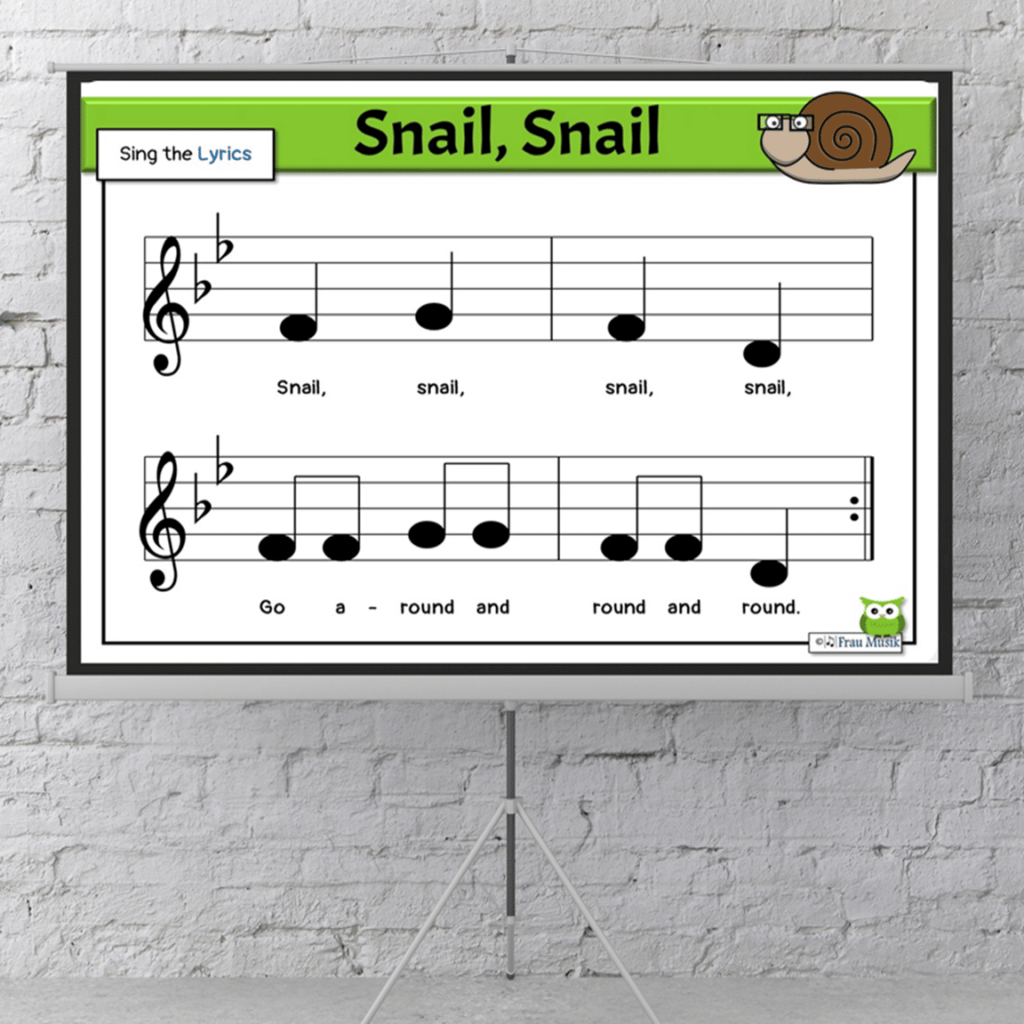
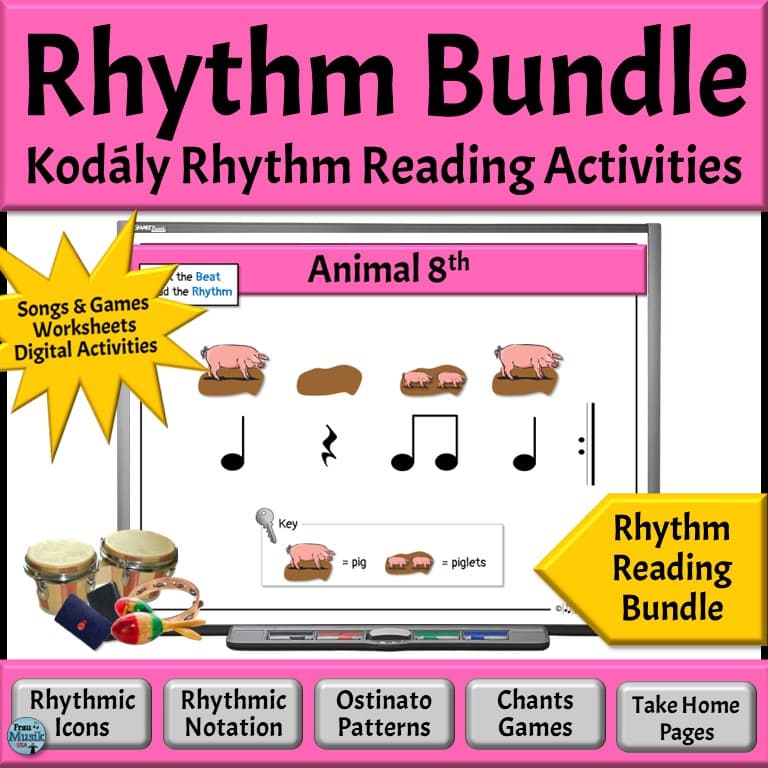




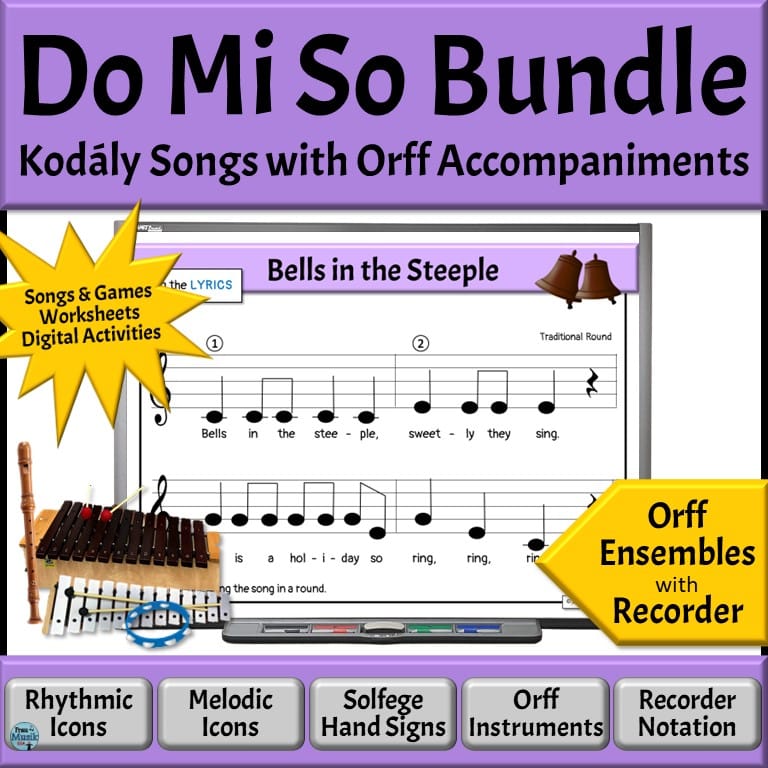
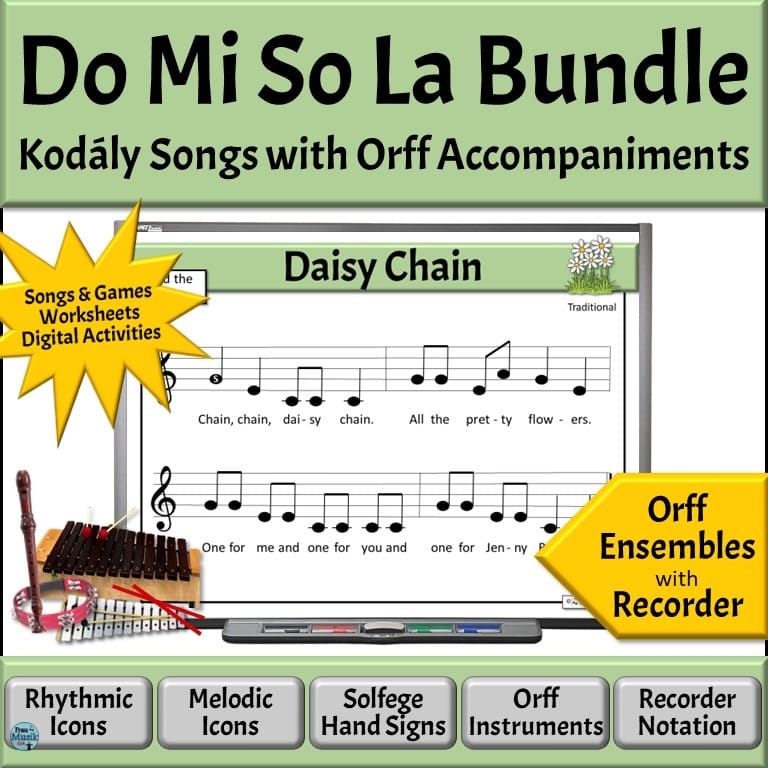
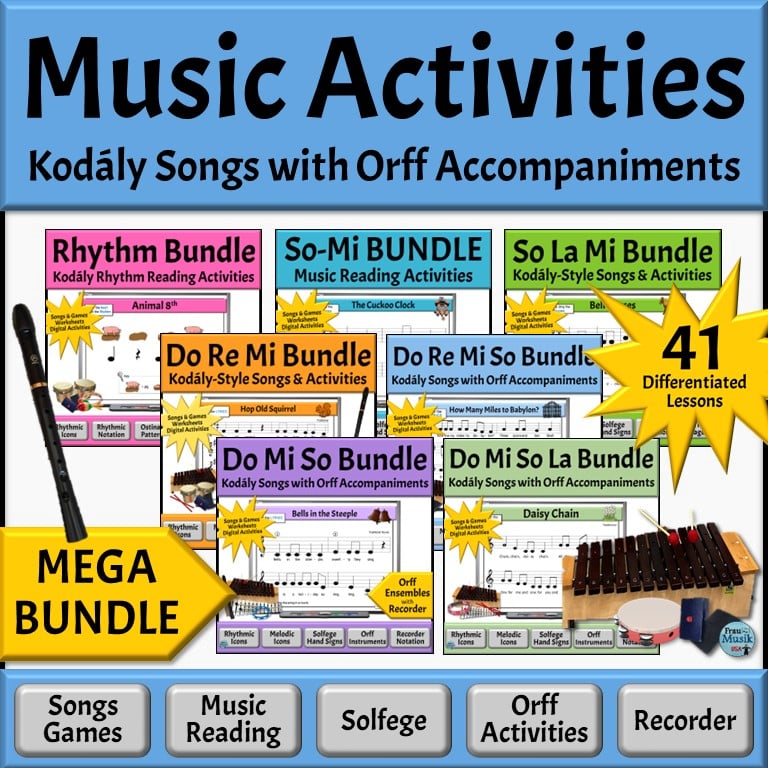
5 Comments
Comments are closed.